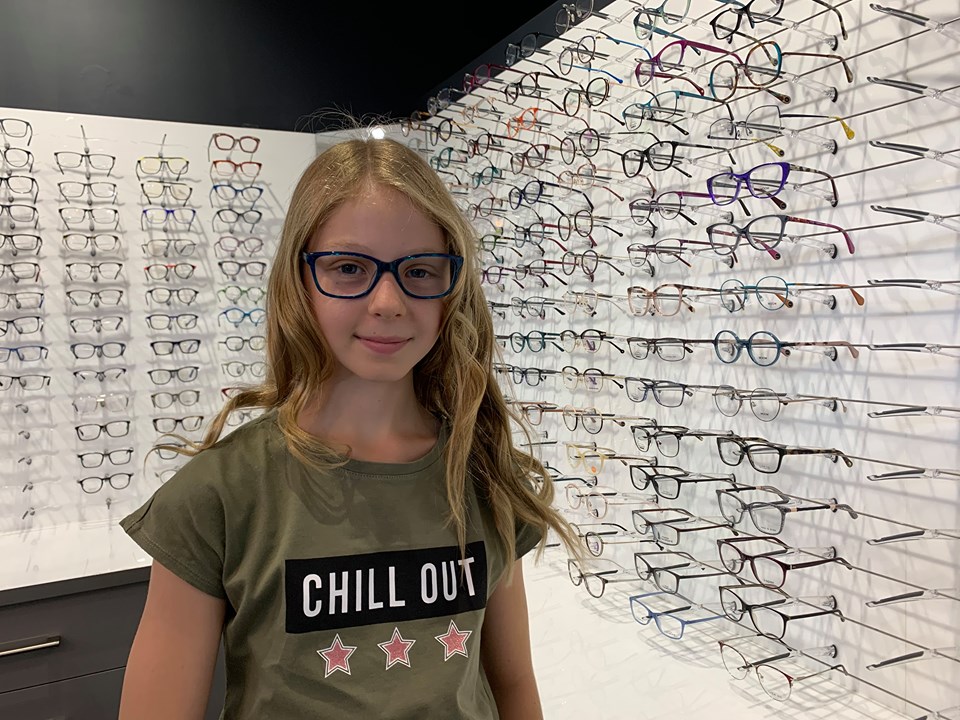Many students struggling at school may be experiencing vision issues.
Perth optometrist Darrell Baker said children can experience learning difficulties, even if they have 20/20 eyesight.
Dr Baker said eyesight is the eyes’ ability to see at near or far distances, while vision is understanding information made available through the eyes.
“Vision plays an important role in reading, writing and board work in the classroom,” said Dr Baker.
“Good vision skills are essential to support learning in children,” he said.
Perth 11-year-old Velvet Cary was having difficulties with reading, maths and comprehension.
Her mother Sarina was concerned and took Velvet to specialists to find out what was wrong.
“She had an eye test, but her eyesight was fine,” said Mrs Cary.
“We thought maybe she had dyslexia because her eyes were jumping across the page and she wrote words inverted.”
When Mrs Cary took Velvet to a paediatric optometrist, she discovered Velvet was having vision issues because her eye muscles were too tight.
With glasses and by resting her eyes, Velvet’s school work improved.
After 18 months Velvet was not having vision issues.
“It was such a relief to finally have answers for what was wrong,” Mrs Cary said.

Dr Baker said his clinics often had an influx of children with vision issue late in term one.
“It sometimes takes several weeks for teachers and parents to realise there is a problem,” said Dr Baker.
“By that stage the child has missed a crucial part of the term’s learning and they struggle to catch up.
“If they don’t have these necessary vision skills, they often give up because it takes too much effort.
“This can lead to behavioral issues because they tune out of the lessons, get bored and are then easily distracted.
“Children with vision issues were sometimes misdiagnosed with conditions such as dyslexia or ADHD.
“This is unfortunate because sometimes the issue is a simple optical problem that can be easily treated.”

Dr Darrell Baker is the owner of Eyes on Oxford and Bull Creek Optometrists and is the President of Optometry Australia.
He said signs parents need to watch out for in their children include:
- Avoiding near visual work
- Perseverance but reduced understanding
- Discomfort, fatigue and a short attention span
“Treatment options for vision issues are very effective and include glasses and/or vision therapy.”
According to Optometry Australia, one in five Australian children suffer from an undetected vision problem which may impact their educational and social development.
Common vision problems, according to Australian College of Behavioural Optometrists (ACBO), include:
- Eye Movement – when eye movement are slow or clumsy. The student loses their place while reading, skips words or uses their finger as a guide.
- Eye teaming – the eyes don’t work together. The student will squint, blink, have poor attention, and untidy writing.
- Eye-hand coordination – lack of skill in writing and drawing development. The pupil is unable to stay within the lines when colouring and has untidy writing.
- Visual information processing problems – visual thinking and processing skills in conjunction with all other sensory systems. The student will have poor letter formation, difficulty with maths logic and reading comprehension.
- Refractive error – short-sighted, long sighted or astigmatism. The child may not be able to see the board, slow or inaccurate copying and avoidance of book and desk work.
According to the ACBO, vision problems do not cause learning disabilities, but poor vision skills interfere with the process and hinder early efforts.
Optometry Australia recommends children have a full eye examination before starting school and regularly as they proceed through the education system.



